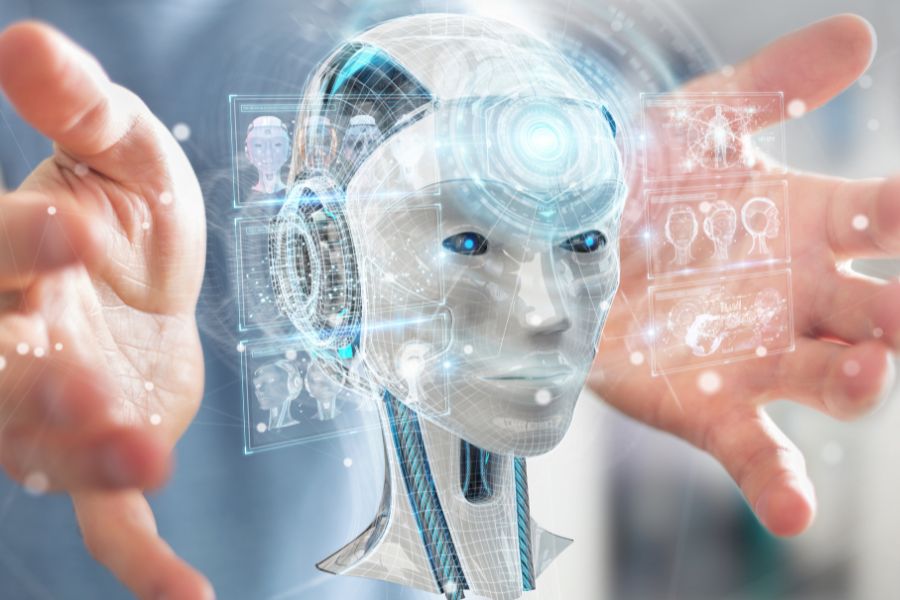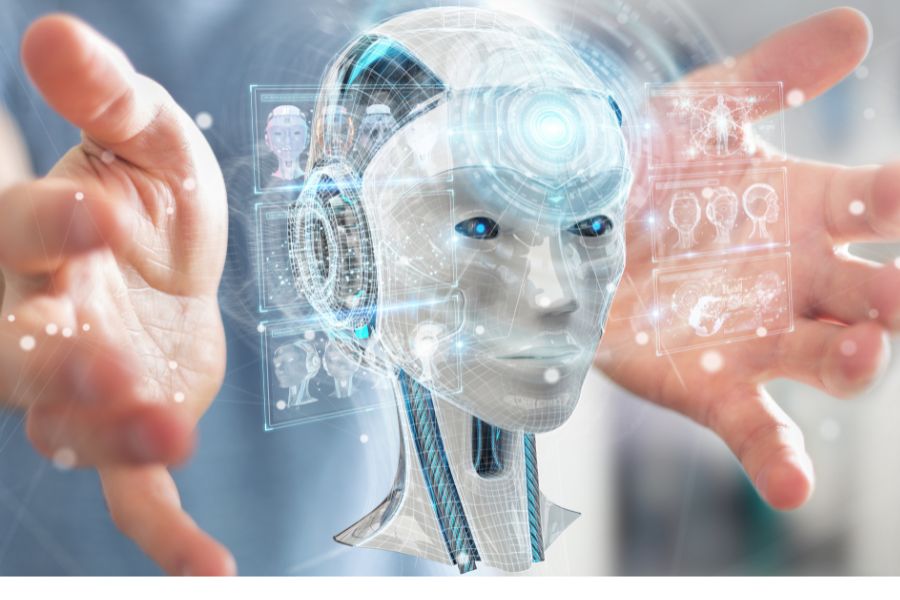IoMT: Bringing the benefits of Industry 4.0 to healthcare
The Internet of Medical Things (IoMT) holds a promising future within the Indian healthcare scenario. Projected to exhibit a CAGR of 14.23% between 2023 and 2028, IoMT applications are swiftly proliferating, bringing about a transformative effect on patient monitoring and remote assistance.
To fully harness its potential in real-time patient monitoring to data-driven insights, IBT explores the opportunities, challenges, and potential of IoMT in shaping a more efficient, accessible, and personalized healthcare ecosystem.
India must accord primacy to key aspects such as data security, interoperability, and AI-driven analytics to boost this sector, ensuring a transformative impact on healthcare.

Image Source: Shutterstock
The Internet of Medical Things (IOMT) is the network of Internet-connected hardware infrastructure, medical devices, and software applications that connect healthcare information technology. It refers to the use of cloud computing, mobile computing, and medical sensors to monitor patients’ vital signs in real-time, and leveraging communication technologies to relay data to a cloud computing framework.
IoMT connects medical devices and applications to healthcare systems via online networks, allowing Wi-Fi communication and cloud data storage. It has revolutionized healthcare with real-time monitoring, patient engagement, and continuous health supervision.
The technology enables telemedicine for remote patient monitoring and self-service, empowering clinicians with accurate health insights. And, within it, implantable chips, wearables, and biomedical embedded systems track vital data. The seamless integration of IoMT promises to shape the future of healthcare in India, bringing efficient, personalized, and data-driven medical solutions to patients, doctors, hospitals, and health insurance companies.
Applications of IOMT
For patients, wearable devices connected wirelessly to measure vital signs like heartbeats, blood pressure, and oxygen levels. It offer personalized attention and linkages with doctors through cloud storage, making them ideal for elderly patients with chronic conditions.
For doctors, access to cloud-stored patient history and data from wearables and home monitoring devices embedded with IoT. These vital data points help to make health tracking, access to diagnostic reports, and informed decision-making.
For hospitals, IoT systems also aid in real-time medical equipment tracking, diagnosis of communicable diseases. This is done through imaging devices, and efficient management of inventory and monitoring devices, therebyureducing costs.
For health insurance companies, AI technology captures patient case history and stores medical documents for investigations and fraud detection. It also help in promoting transparency among patients, hospitals, and customers.
The global IoMT market was valued at US$ 61.56 billion in 2022, and it is projected to grow at a CAGR of 23.70% from 2023 to 2032 according to The Brainy Insights, reaching an anticipated value of US$ 516.40 billion by 2032. During the forecast period, Asia Pacific is expected to exhibit the fastest growth. Additionally, the market is driven by increasing concerns about health and related activities, growing investments in research and development processes, and the adoption of solutions.
India’s Internet of Things market size has reached US$ 1 billion in 2022, and it is expected to reach US$ 2.2 billion by 2028, exhibiting a CAGR of 14.23% during 2023-2028. This signifies the rapid expansion and adoption of IoT technologies in various industries in India including healthcare. IoMT applications are becoming increasingly prevalent for patient monitoring, remote medical assistance, and real-time health data collection.
Arun Mane, Founder and CEO at Amynasec Research Labs, while explaining the future potential of IOMT in India, said, “The healthcare landscape in India is undergoing a transformative shift with the advent of the Internet of Medical Things (IoMT). The convergence of medical devices, data analytics, and connectivity promises to revolutionize patient care, enhance efficiency, and contribute to better health outcomes. We delve into the future of IoMT in India and the potential it holds for reshaping the healthcare sector.”
Segments of IOMT
The IoMT market is divided into four regions: North America (the US and Canada), Europe (UK, Germany, France, Italy, Spain, Russia, and Rest of Europe), Asia-Pacific (India, China, Japan, South Korea, and Rest of Asia-Pacific) and Rest of the World (Latin America and the Middle East and Africa (MEA)).
Asia-Pacific is predicted to experience the fastest growth due to digitalization in healthcare, Electronic Health Records (EHR) adoption, rising disposable income, and growing demand for better patient outcomes.
The end-user segment is categorized into homecare, clinics, hospitals, research institutes & academics, and others. In 2022, the hospital segment dominated the market with a 29.16% share and a revenue of US$ 17.95 billion. This growth is attributed to the ever-increasing adoption of remote patient monitoring systems and EHR.
Key players in the market are Apple, Inc., Boston Scientific Corp., IBM Corp., Cisco Systems, Inc., GE Healthcare, Koninklijke Philips N.V., Medtronic PLC, and Siemens Healthcare GmbH, among others.
Opportunities of IOMT
Remote Patient Monitoring and Care
IoMT is helping in a major way when it comes to addressing remote patient monitoring challenges. Connected devices capture vital signs for real-time data transmission, enabling timely interventions, reducing hospital visits, and empowering patients. IoMT also aids chronic disease management through continuous monitoring and virtual consultations, improving access to specialized care for conditions like diabetes and cardiovascular diseases.
Healthcare Data-Driven Insights
IoMT devices produce abundant healthcare data, offering AI-driven predictive insights for disease patterns, resource allocation, and informed decision-making. These data-driven insights reshape research and health policies, enhancing patient care.
Healthcare Accessibility and Telemedicine
IoMT can transform Indian healthcare via telemedicine, linking remote patients with professionals, enhancing access, and balancing medical resources. This eases urban centers’ burden, fostering a more equitable distribution of healthcare services.
Optimizing Hospital Functions
IoMT goes beyond patient care, optimizing hospitals. Smart devices monitor equipment, streamline processes, and offer real-time insights into resources, patient flow, and asset management. This data-driven approach boosts efficiency, cuts wastage, and ensures smoother healthcare delivery.
One of the key challenges, however, is ensuring the security and privacy of patient data, as there is a risk of data breaches and unauthorized access to sensitive information. Standardization and compatibility of data formats and communication protocols are crucial for seamless data exchange between different IoMT devices and systems.
Moreover, the accuracy and reliability of patient data are essential to avoid errors in data handling, which could lead to incorrect diagnoses and treatment decisions. Integrating data from various sources and devices into a unified platform for analysis and decision-making is another challenge that requires attention.
When we asked Mr. Arun about the challenges that are faced in India while adopting IOMT, he said, “IoMT integration in healthcare offers convenience but raises cybersecurity risks. Cases like WannaCry’s global attack disrupting services, breaches in remote patient monitoring systems, and insulin pump manipulation highlight vulnerabilities. Implantable device compromise and health app breaches underscore security needs. Even medical imaging and hospital networks aren’t immune. IoT botnets target medical devices. Smart home IoMT devices and malware infections disrupt healthcare, emphasizing updates, robust measures, and personnel training”.
If it is able to successfully address these critical loopholes and build trust, IoMT has the potential to revolutionize healthcare by enabling real-time tracking and intervention, facilitating remote monitoring and communication, and providing personalized care based on a patient’s past health records and current health status. Additionally, the use of data analytics and machine learning in IoMT can lead to data-driven health predictions and the development of evidence-based guidelines for healthcare practices.
By fostering collaborations and empowering patients with access to their health data, IoMT can lead to more efficient, accessible, and personalized healthcare, benefiting both patients and healthcare providers. Addressing ethical and legal implications will ensure responsible deployment, driving IoMT’s transformative impact on India’s healthcare industry.













Leave a comment